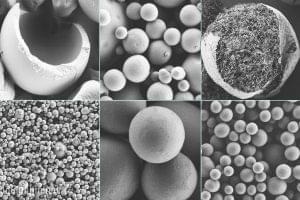Mold toxins detected in golden jackals in southern Hungary
During a study, researchers from the Institute of Genetics and Biotechnology of the Hungarian University of Agricultural and Life Sciences detected dangerous mold toxins, so-called mycotoxins, in the bodies of golden jackals (Canis aureus) in southern Hungary.
 During the research, liver samples from 19 jackals were examined, and at least three types of mycotoxins were found in each sample. The most common were deoxynivalenol, fumonisin B1 and zearalenone, but aflatoxin and ochratoxin-A were also present – they wrote in the statement sent to MTI.
During the research, liver samples from 19 jackals were examined, and at least three types of mycotoxins were found in each sample. The most common were deoxynivalenol, fumonisin B1 and zearalenone, but aflatoxin and ochratoxin-A were also present – they wrote in the statement sent to MTI.
Mycotoxins are compounds produced by molds that occur primarily in cereals. The diet of jackals is very diverse, including plant-based food, small mammals and the offal of dead large game. Thus, by consuming them, they can easily come into contact with mycotoxins – they added.
These substances pose a serious health risk not only to animals, but also to humans – warned the researchers, who also observed that the amount of mycotoxins was different in animals of different ages and sexes.
While the level of ochratoxin-A was higher in adult females, the concentration of zearalenone was prominent in adult males. Females typically accumulated more deoxynivalenon than males.
Based on the results, jackals may not only be victims, but also indicators of environmental pollution. “The golden jackal as an apex predator can be an excellent bioindicator for characterizing mycotoxin pollution in natural habitats” – the publication quotes Zsuzsanna Szőke, the leader of the research.
The study highlights that the health of wild animals is closely related to human activity, especially arable grain cultivation, which is a basic pillar of food production, and the winter feed supplementation of herbivorous large game. The researchers say further studies are needed to better understand the long-term effects of mycotoxins on ecosystems.
The results of the research were published in the International Journal of Molecular Sciences.
Related news
Nébih: Hungary had to take action against more than 300 risky products last year
🎧 Hallgasd a cikket: Lejátszás Szünet Folytatás Leállítás Nyelv: Auto…
Read more >AM: Hungarian Presidency prioritizes consumer protection
🎧 Hallgasd a cikket: Lejátszás Szünet Folytatás Leállítás Nyelv: Auto…
Read more >The aflatoxin load of Hungarian consumers was examined by Nébih specialists
🎧 Hallgasd a cikket: Lejátszás Szünet Folytatás Leállítás Nyelv: Auto…
Read more >Related news
(HU) Idei győztes sorrend: Grand Automotive East, Tesco Magyarország, Nestlé Hungária
🎧 Hallgasd a cikket: Lejátszás Szünet Folytatás Leállítás Nyelv: Auto…
Read more >Bagels, stuffed cabbage and online scams – this could be the Christmas menu for many due to the rise in cybercrime
🎧 Hallgasd a cikket: Lejátszás Szünet Folytatás Leállítás Nyelv: Auto…
Read more >25,000 packages of donations will reach people in need as a result of the 2025 Joy of Giving! fundraising campaign
🎧 Hallgasd a cikket: Lejátszás Szünet Folytatás Leállítás Nyelv: Auto…
Read more >






